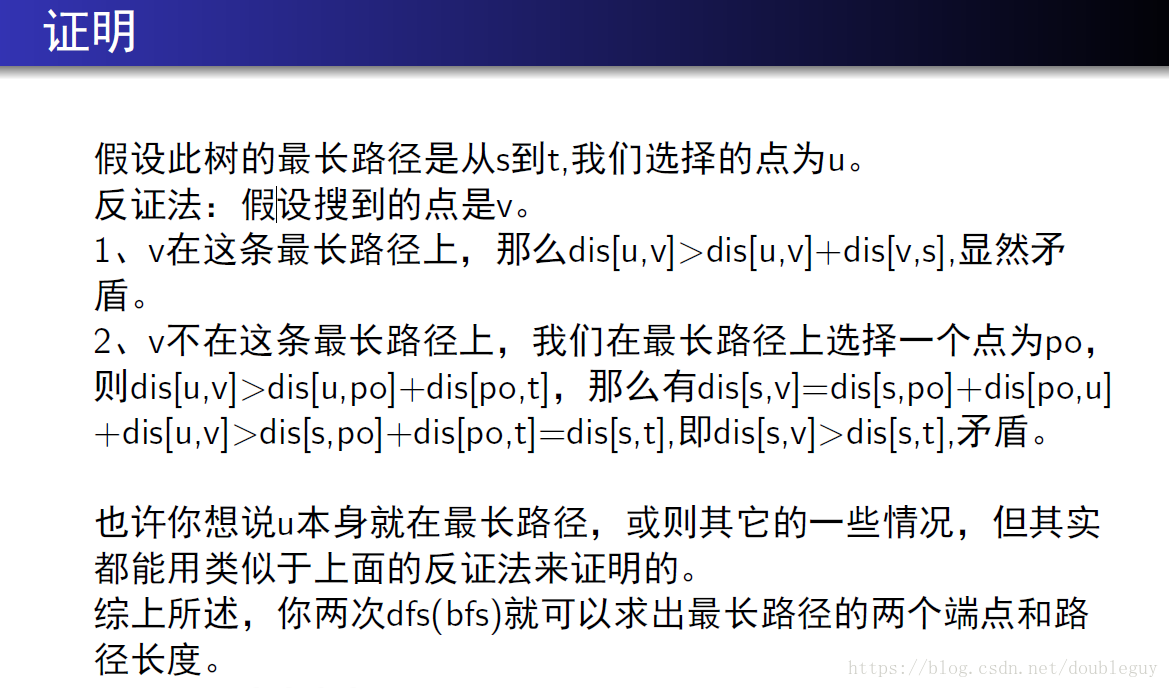Building and maintaining roads among communities in the far North is an expensive business. With this in mind, the roads are build such that there is only one route from a village to a village that does not pass through some other village twice.
Given is an area in the far North comprising a number of villages and roads among them such that any village can be reached by road from any other village. Your job is to find the road distance between the two most remote villages in the area.
The area has up to 10,000 villages connected by road segments. The villages are numbered from 1.
Input
Input to the problem is a sequence of lines, each containing three positive integers: the number of a village, the number of a different village, and the length of the road segment connecting the villages in kilometers. All road segments are two-way.
Output
You are to output a single integer: the road distance between the two most remote villages in the area.
Sample Input
5 1 6 1 4 5 6 3 9 2 6 8 6 1 7
Sample Output
22
给你很多对点,并告诉你他们之间的长度,让求最远的两点之间的长度。其实就是一个求树的直径的模板题。
要求树的直径,先随便找一个点进行bfs可以找到距离这个点最远的点,这个最远的点就是树直径的其中一个端点,然后对这个端点再进行一次bfs就找到直径的另一个端点了,那么距离也就出来了。
可能你会问为什么随便找一个点bfs后得到的点一定是树的端点?下面是别人的证明(虽然我没看太明白,不过是这个理)。

AC代码如下:
#include<iostream>
#include<cstring>
#include<queue>
#include<vector>
const int maxn=100020;
using namespace std;
int dis[maxn],ans;
bool vis[maxn];
vector<pair<int ,int> > V[maxn];
int bfs(int x)
{
memset(dis,0,sizeof(dis));
memset(vis,0,sizeof(vis));
queue<int> Q;
Q.push(x);
vis[x]=1;
int point=0;
while(!Q.empty())
{
int F=Q.front();
Q.pop();
if(dis[F]>ans)
{
ans=dis[F];
point=F;
}
pair<int,int> t;
for(int i=0;i<V[F].size();i++)
{
t=V[F][i];
if(vis[t.first]==0)
{
vis[t.first]=1;
dis[t.first]=dis[F]+t.second;
Q.push(t.first);
}
}
}
return point;
}
int main()
{
int x,y,z,N,M;
char dir;
while(cin>>x>>y>>z)
{
V[x].push_back(make_pair(y,z));
V[y].push_back(make_pair(x,z));
}
ans=0;
int point=bfs(2);
ans=0;
bfs(point);
cout<<ans<<endl;
return 0;
}




 探讨了在北境复杂且昂贵的公路网络中,如何通过算法找出任意两个村庄间最远的距离。此问题实质为求解树状结构中两点间的最长路径,采用两次宽度优先搜索策略确定树的直径。
探讨了在北境复杂且昂贵的公路网络中,如何通过算法找出任意两个村庄间最远的距离。此问题实质为求解树状结构中两点间的最长路径,采用两次宽度优先搜索策略确定树的直径。

















 374
374

 被折叠的 条评论
为什么被折叠?
被折叠的 条评论
为什么被折叠?










